Artist Mark Bradford recently visited one of Kristine Hatanaka’s art classes at Culver City High School to talk to students about works they’d created based on his art-making activity RE-RE-Process, available through Open Studio. Initiated by Mark as part of the Getty Artists Program, Open Studio is an online collection of free, art-making ideas authored by noted national and international artists that aims to make contemporary art practice accessible to K–12 teachers and students.
RE-RE-Process has three parts: rearranging song lyrics to make a visual remix, charting social groups in the school lunch room, and creating (with eyes closed) self-portraits in contour. All three are about mapping. But when students do these projects, it turns out they’re actually “mapping” themselves.
“With this project I wanted you to experience art,” Mark told students, “but not art like you see at a museum—art that comes out of your day-to-day experiences.”
Mark’s goal in visiting the classroom was to see how students interpreted his assignments and to talk with them about their experiences. By looking at each student’s pieces together, he helped them recognize facets of themselves that had emerged, whether invited or not, during the process.
“Art kind of tells you your business,” as he put it.
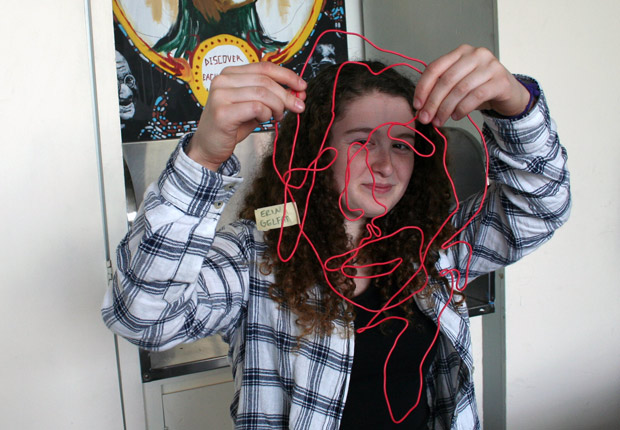
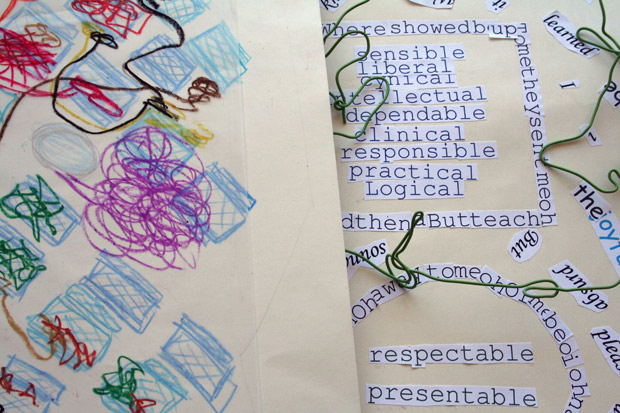
One student gravitated toward vertical lines. Another liked to organize space, while a third enjoyed messing it up. Each student had a distinctive voice, which came through in unusual ways. In one student’s wire portrait and lunch room sketch, for example, Mark found a powerful similarity—not in line or color, but in energy. “Your sculpture looks like your drawing, even if you don’t think it does. There’s an intensity that comes through.”
Mark used words like delicate, geometric, sensual, raw to describe students’ work and help them find commonalities with other students, regardless of age, gender, ethnicity, or where they sit in the lunch room. (“I don’t ever assign words like ‘masculine’ or ‘feminine,’” he emphasized.) He asked students to hold up their works in two shifts. For the first, they called out: edgy, eccentric, brash, intense. And for the second: channeled, sensitive, lonely, smooth. Like the lunch room students mapped, the art had groups, too.
For some students, looking at their three pieces together was a chance to discover contradictory facets of their own personalities. Like one quiet, attentive young woman whose “romantic, love-and-flowers” composition was finished off by what looked like fresh blood spatters. Or possibly strawberry juice.
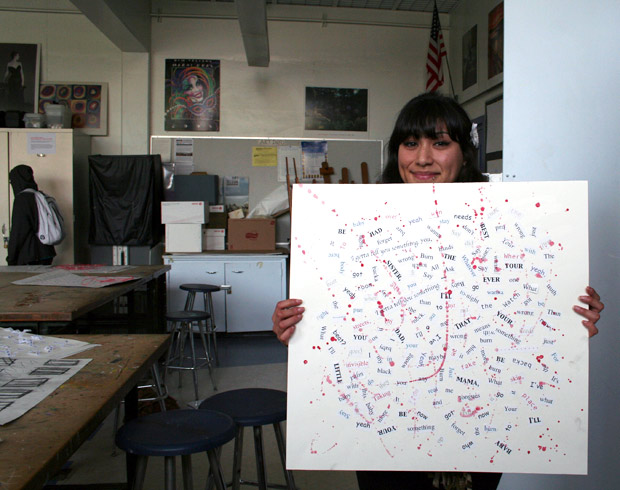
“What’s available on the surface isn’t all that’s there,” Mark told her. In other words, when you make art you find yourself—even if that wasn’t what you set out to do. That was the story for Mark, too. His thing wasn’t vertical lines or composition or intensity, but simply paper. “I’d always be picking up paper, picking up trash,” he told them. “At first I thought I was just cheap, but then I realized that was just me.”
The students wanted to know if Mark—whose work hangs in places like the Whitney and LACMA and who was officially declared a genius in 2009—ever struggles, gets stuck. Um…yeah. “I get mad! I get impatient!” He described a typical day in the studio, a rollercoaster of emotions that included triumph, despair (break for lunch), resignation, and finally fragile equilibrium. He also talked about two paintings in his studio that he was struggling with, and admitted to throwing some in the trash. “I feel no different than you guys,” he said. “Every time I do a painting or a sculpture, it’s like it’s the first time.”
The 2:00 bell rang. “If I could pass something on to you,” Mark said, “It’s this: Keep going. Push through it. Try to step back. Don’t tear down your self-esteem. Bad painting? All right. Bad painting, good person.”
(Video by Steve Saldivar)
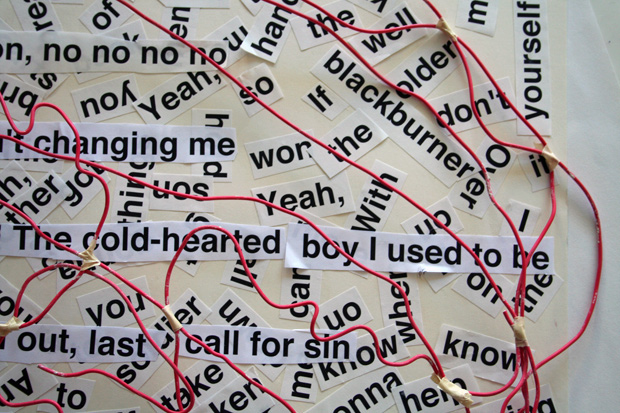


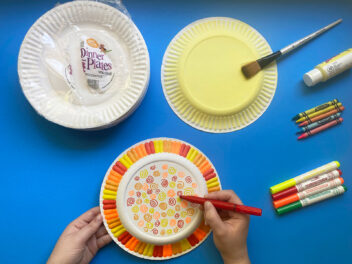

As a multi-media artist and educator, I have long been an advocate of “art from everyday experience.”
Only by removing the cultural “norms and standards” to allow authentically personal vision, can we hope to see a new generation of “art from the heart.”
Kudos to getty for their support for this much needed avenue of artistic expression.
A great job done by Mark Bradford, but also by Anelisa Stephan on evoking the arc of the students’ development–as released by Bradford’s commitment to sharing his practice. I’ve read a lot of reports on out-reach projects like this one–I’ve even led them myself (or tried to!)–but there was greater insight than usual conveyed here. I loved the way the writer selected just the right intriguing and sensitive detail to include. Plus, very reassuring for me to hear that even Bradford gets as frustrated and upset as I do by the routine of “creativity”! Rollercoaster indeed …